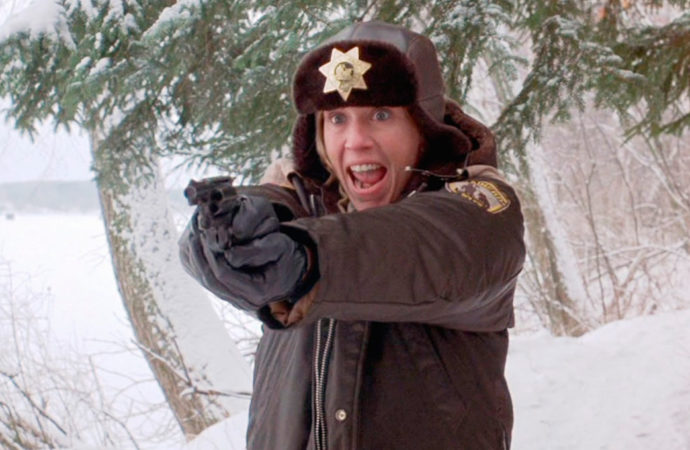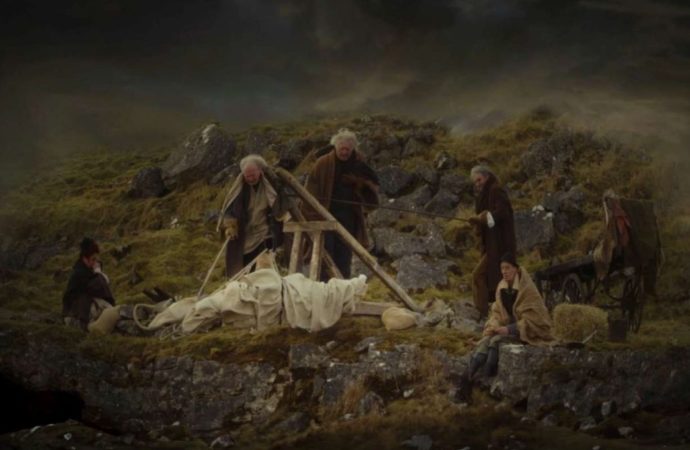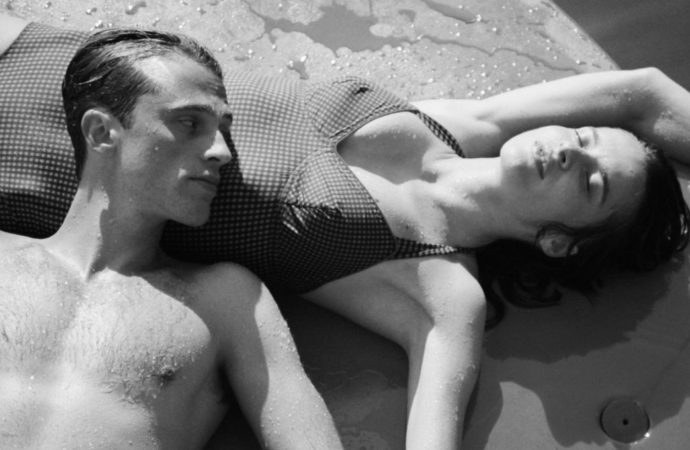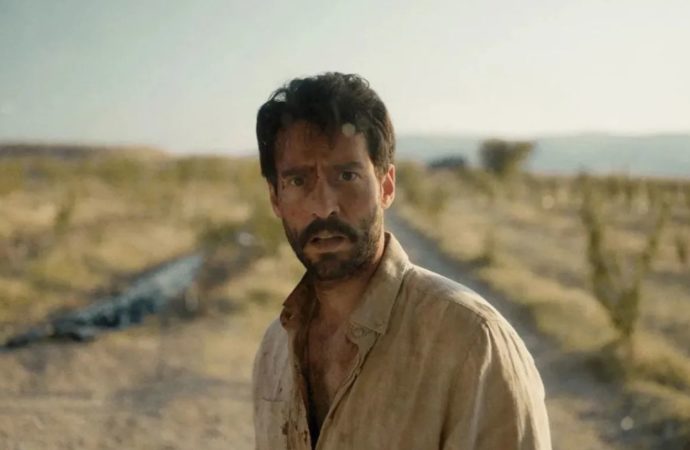Fargo opens with the following disclaimer: This is a true story. The events depicted in this film took place in Minnesota in 1987. At the request of the survivors, names have been changed. Out of respect for the deceased, the rest has been told exactly as it happened.
With that introduction, the brothers Joel and Ethan Coen plunge us into a film of opposites, into a false world of realism, in which reality and fiction will come face to face, for Fargo is as much a world of its own as García Márquez‘s Macondo.
The Coens set the story in their native Minnesota and take their clichés, the snow, the accent, the kindness, the Paul Bunyan statue, things they cover with a good layer of blood and a world all their own in which the everyday is wrapped up in totally extraordinary events.
But in one thing it is much more real than most thrillers and crime films, and that is that here there are no brilliant minds and perfect plans, but the real stupidity of people who have seen too much television and films and who, with the water up to the neck and their morals on the run, decide to go down the criminal route.
What is clear is that Joel and Ethan Coen have a world as much their own as those film auteurs who have managed to turn their surname into an adjective, be it Chaplinesque, Fellinian or Buñuelesque. And Fargo is a perfect example of that (Coenian?) world in which stupidity (William H. Macy’s character), decency (Frances McDormand’s character) and pure evil (Peter Stormare’s character), coexist under the fates of a destiny in which if things can go wrong, they will go wrong.
https://youtu.be/iZ9q0PoD3Y8
A world that mixes satire, mystery, dark humour and the Scandinavian origins of the people of Minnesota. There’s an old joke in the US about a Swedish American who says “I’m tired of America, I’m going back to Minnesota” and it sounds perfect for a film full of Gundersons, Lundegaards, Grimsruds and Gustafsons.
The fact is that the Coens were not in an easy position before they started filming. Their previous film, The Hudsucker Proxy (1994), had failed to live up to expectations and had been a flop with critics and audiences. The film had a budget of 30 million dollars and featured stars such as Paul Newman and Tim Robbins, but even so, it did not gross more than three million. So the brothers were playing one card at a time, in an industry that doesn’t forgive two flops in a row.
When they presented the script for Fargo, many thought it was their definitive commercial suicide, a thriller without action, full of blood, black humour and no stars. And for this project, the Coens enlisted the help of some regulars like Frances McDormand, the star of their first film, Blood Simple (1984), and Joel’s wife, or Steve Buscemi, who had already appeared in Miller’s Crossing (1990), Barton Fink and The Hudsucker Proxy (and would do so again in their next project, The Big Lebowski), as well as hiring William H. Macy, who won them over when he threatened to shoot Ethan’s dog if he didn’t get the part, and Peter Stormare, who they had already wanted to play Eddie Dane in Miller’s Crossing.
The fact is that the Coens got the perfect casting for each of their roles, such as the self-sacrificing husband played by John Carroll Lynch, and the film worked perfectly. Despite the fact that it didn’t snow particularly that winter in Minnesota, which meant that they had to go further and further north, the shooting went well and Roger Deakins delivered incredible photography, with those frozen landscapes where the snow is not something beautiful, but just one more of the adversities that are presented.
The film begins with a car driving along a snowy road, in a cold shade of blue, arriving at a little place in the middle of nowhere, in Fargo, the only time in the whole film that they are in the town that gives the film its name, another of those things that we try to make sense of when all the Coens have to say about it is that it sounded better than Brainerd, the town that appears many more times in the film…
https://youtu.be/hHQDc3YQw4w
There is a meeting between a man, Jerry Lundeggard, and two others who have never met, the first wants them to kidnap his wife and split the ransom, to be paid by his rich father-in-law, with them. He has some financial problems that we don’t get to know about. This is another of the favourite things about this pair of incredible screenwriters. They don’t explain everything, there will be people who want to see a sequel in which they tell us what happened to the million dollars buried in the ice, there will be others who prefer a prequel in which they tell us what fucking financial mess Lundegaard was in to unleash so many catastrophic misfortunes, but I prefer, like the Coens, the precious treasure of mystery, there are infinite possibilities in it.
The thing is, as if to pay homage to Hitchcock, the Coens don’t introduce us to the film’s main character until half an hour into the film, and we’re in a film that’s just over an hour and a half long, but from the moment Frances McDormand/Marge Gunderson appears on screen you totally get the hang of her. She is the character who represents decency and reliability of the ordinary, despite her accent, despite her plain looks, she is a very sharp police officer, and it doesn’t take long for her to get a sense of what has really happened with the first triple murder.
She is many months pregnant, which is no coincidence, and after introducing us to two characters who have killed three people, we are shown another who is about to give birth to a new one. As I said at the beginning, Fargo is a film of contrasts, it is both serious and comic, it is pessimistic (everything that can go wrong…) and optimistic (the Coens are with Marge and Norm), it is cold, those snowy landscapes, and warm at the same time, the scenes in the Gunderson home.
There is also the everyday versus the extraordinary and, of course, reality versus fiction, and the fact that those true facts spoken of at the beginning are not so, the whole film being an invention of the brothers, with small details taken from real cases.
These contradictions can also be seen in the reaction to the film: on the one hand, there were those who saw in its portrayal of the inhabitants of Brainerd, led by Marge and her kind husband, a beautiful vindication of the pleasures of a quiet life and honest people, but there were also those who wanted to see condescension and mockery towards the simple and good-natured locals (Yaaah).
Something that speaks beautifully of the Coen brothers’ work, leaving it up to the viewer to decide whether it’s a praise or a critique of a simple, uncomplicated way of life. Perhaps there is a bit of both, because in the wonderful and contradictory world of the Coens, sarcasm can also have a good heart.









No one has posted any comments yet. Be the first person!